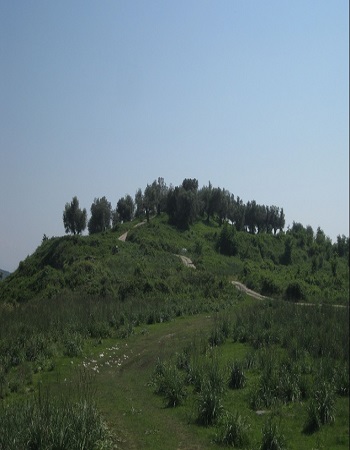
Acropolis
Behind the stoa, it is possible to climb over the earth bank and over the remains of a Byzantine wall that was built across the site running north-south behind the stoa, to the original acropolis, which can be seen rising in the dinstance. To reach it involves walking across a flat area about 500m wide, partly covered with grass, partly with undergrowth. Very little of this side of the site has been exavated and much of the ancient city lies near surface. The area is thought to have been occupied largely by mercantile buildings during the Roman period, the masonry from which was removed and used to build houses and agricultural buildings in the medieval and modern periods in the nearby villages of Mbrostar and Pojan.
Returning across the site by the original route, to the east is a small acropolis , 1.27 hectares in area, with a few olive trees growing on it. This was the site of a temple dating from late antiquity, probably dedicated toApollo or Artemis, the foundations of which have been axcavated and can be seen.
The acropolis itself is thought to have been one of the first parts of the site to be occupied, with the wall on the east side having foundations that are thought to date from about 600BC, and indicate Illyrian settlement. The wall here was about 3m thick. In the 4C BC, the city is thought to have spread to the south and south-west of this acropolis.